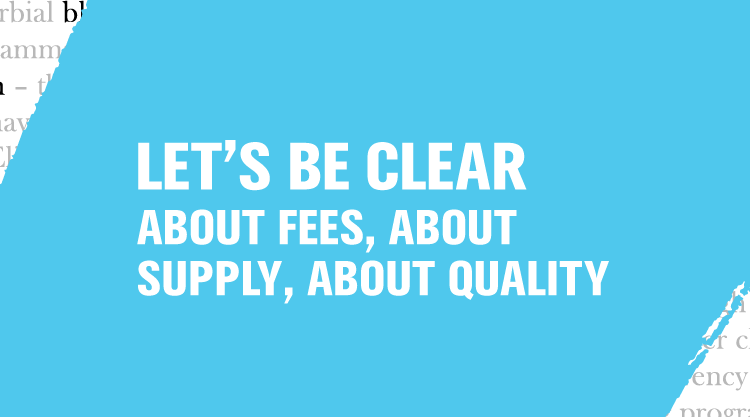As brand advertising spend overtakes direct response spend in the programmatic ecosystem, transparency has become one of the most heavily discussed topics in our industry today.
Transparency takes on several dimensions – transparency of fees charged and to whom; inventory quality, viewability, and authenticity from an advertiser’s perspective; and ad quality and the impact to consumer experience from a publisher’s perspective.
However, we believe that the ultimate measure of transparency is control. Who controls the quality of ad inventory upon which an advertiser’s ad appears? Who controls the user experience when an autoplay video ad is shown? Who controls the pricing and fee distribution in a programmatic auction? Ownership of these decisions is key to creating transparency within our ecosystem.
The Pricing Debate
Since the dawn of programmatic advertising, there have been lurking questions around what the fair “take rate” is for technology companies. The notion of take rate is itself debatable, as it assumes a static value of an impression which we all recognize can be significantly increased by data, packaging, and algorithms. However, the dramatic growth of media buying and selling that automation enables has brought the topic to the forefront of industry conversations. We can all agree that technology companies that invest heavily in innovation, infrastructure, and risk-taking deserve fair compensation for the value that they help create.
That value may vary based on media format (TV vs. display vs. audio), sales channel (direct vs. indirect), ad format (display vs. video vs. native), and technological sophistication of solution (transaction automation or workflow automation). As a result, transparency is at times difficult to understand because it can change significantly depending on context.
At PubMatic, we see sustainable take rates in the 20-25% range, consistent with where major public companies in our ecosystem are operating today. Those fees are, and will continue to be, shared between buyers and sellers, as both parties recognize value. These fees should be and are covered in our contractual agreements. Take rates may come down over time as volumes increase. They may also shift as the market evolves to encompass more direct-sold brand spend in programmatic. There is a natural regulatory force at work, however: if rates are too high, then competitors will be induced to enter the market and compete; if rates are too low, then companies will not be able sustain themselves and will refocus on other opportunities or close down.
As a software platform company focused on the needs of publishers, we are different from exchanges in the ecosystem. We believe that the pinnacle of transparency is control – giving our customers the ability to control their programmatic advertising business and set pricing and fee structures for themselves. For this reason, we have brought to market a variety of purely technological business models where publishers can use our technology on a CPM subscription basis with no other fees from us to run and close their own auctions. Our goal is to provide a spectrum of different solutions that meet the varied needs of our customers.
The Demand for Quality
From brand safety to viewability to fraud, concerns over quality across the digital supply chain remain at the forefront of industry discussions. There is a need for transparency on both the inventory and ad quality sides of the equation, safeguarding publishers and advertisers alike. As a result, we are seeing a resurgence of direct relationships between buyers and sellers of digital media, where quality standards can be ensured. We are also seeing a plethora of supply chain validation companies such as WhiteOps, Integral Ad Science, Moat, and others, as well as exciting new innovations such as the ads.txt initiative.
In the now famous speech by Marc Pritchard, chief brand officer of Procter & Gamble, he clearly proclaimed that P&G was putting their money where their mouth is and holding their partners accountable for managing a responsible supply chain. Subsequently, the recent mandate by the IAB that members be registered with the Trustworthy Accountability Group (TAG) is a positive sign of things to come. Action plans have replaced conversations.
What This Means for the Future
We now operate within an environment where algorithms, infrastructure, and innovation create competitive advantages. Publishers and media buyers need to work with partners like PubMatic who can not only drive results and meet KPIs, but who also provide education and support across the ecosystem. As our industry continues to evolve and as more brand advertising spend shifts into the programmatic channel, the need for trusted partners remains more important than ever.
Our focus is on providing transparency as it relates to inventory and ad quality, transparency of business models, and ultimately delivering publishers with control of how their inventory is priced. Providing this control to our publisher customers is unique to PubMatic and will result in the highest level of transparency in the long term.


